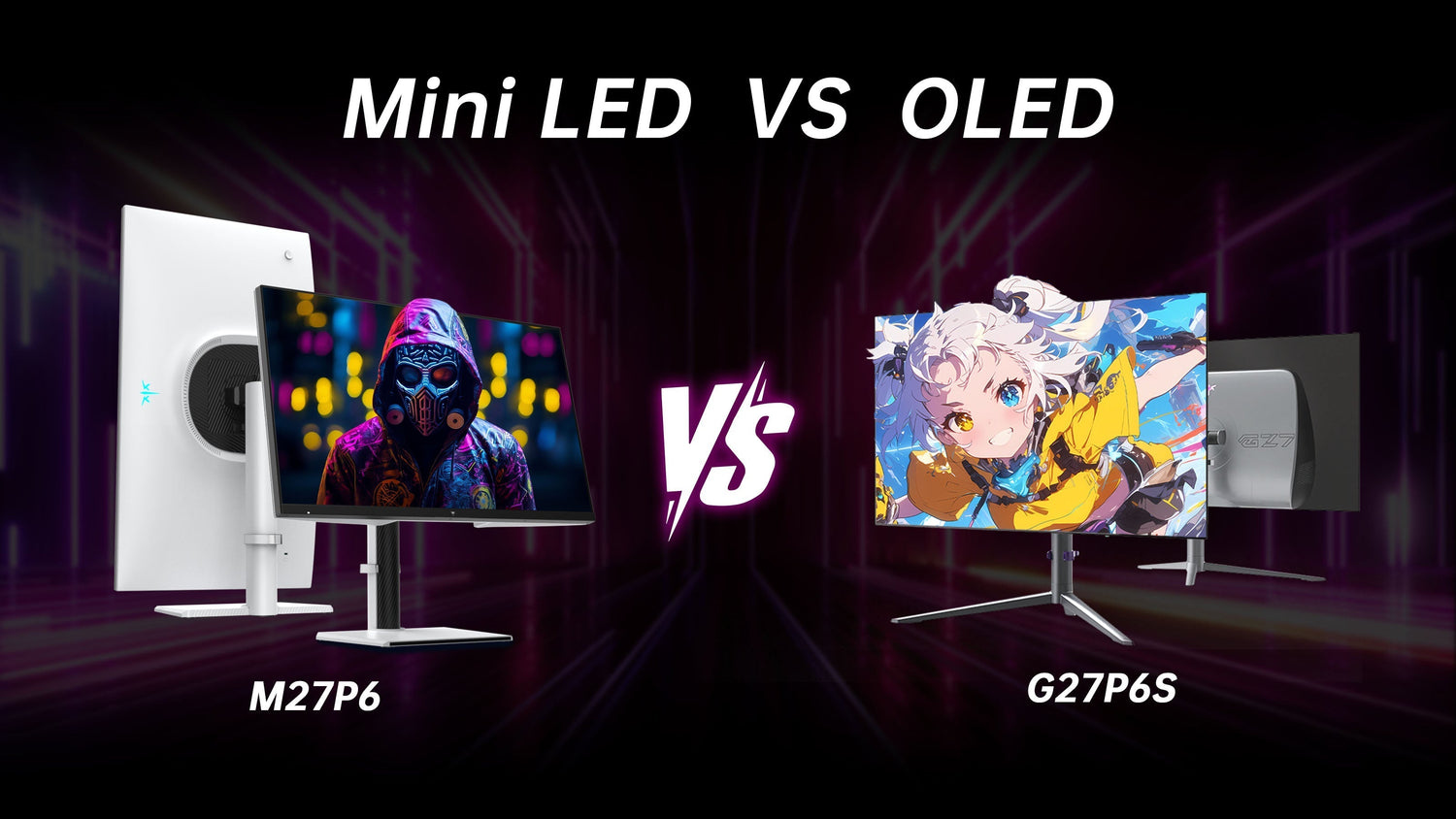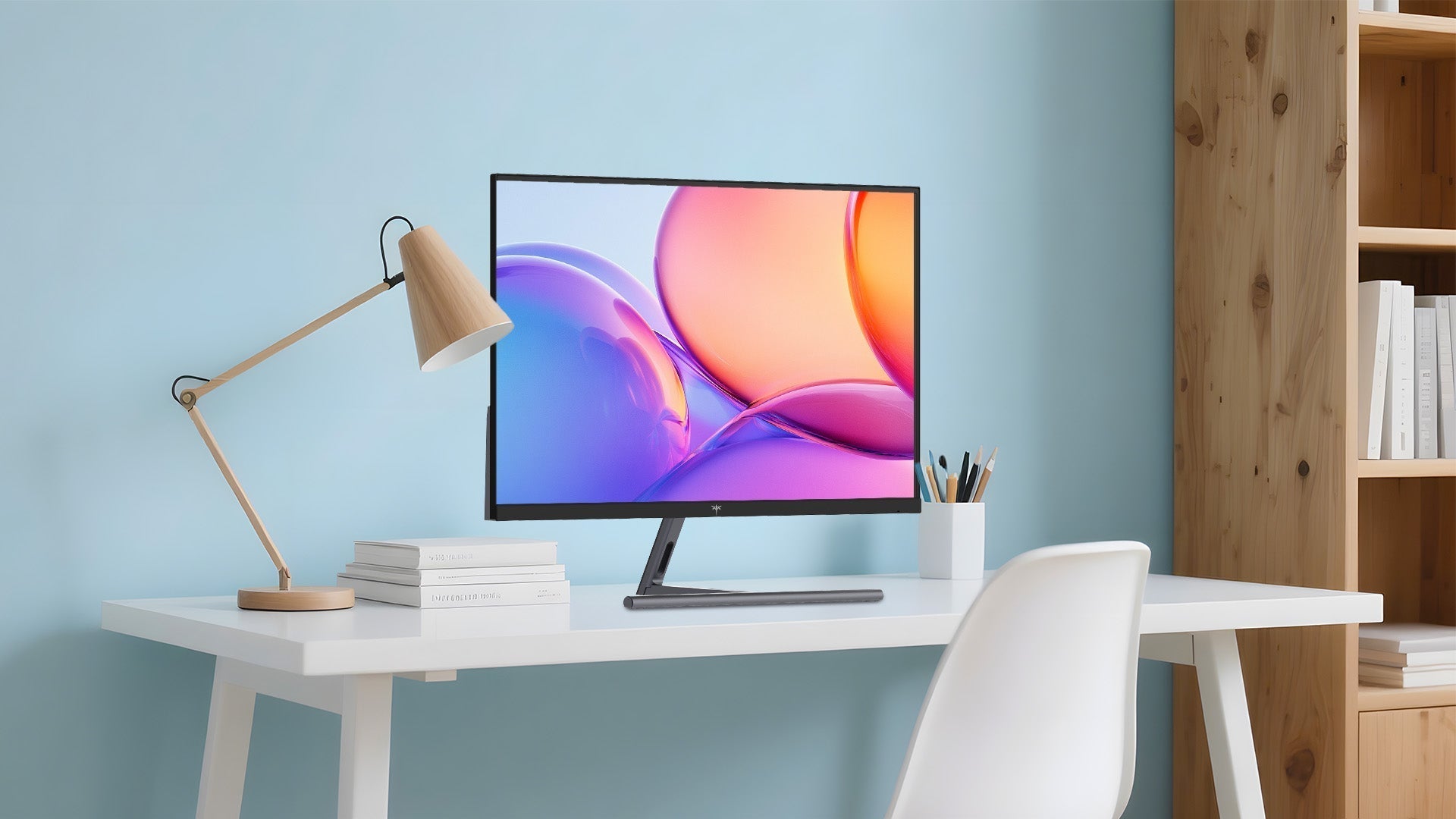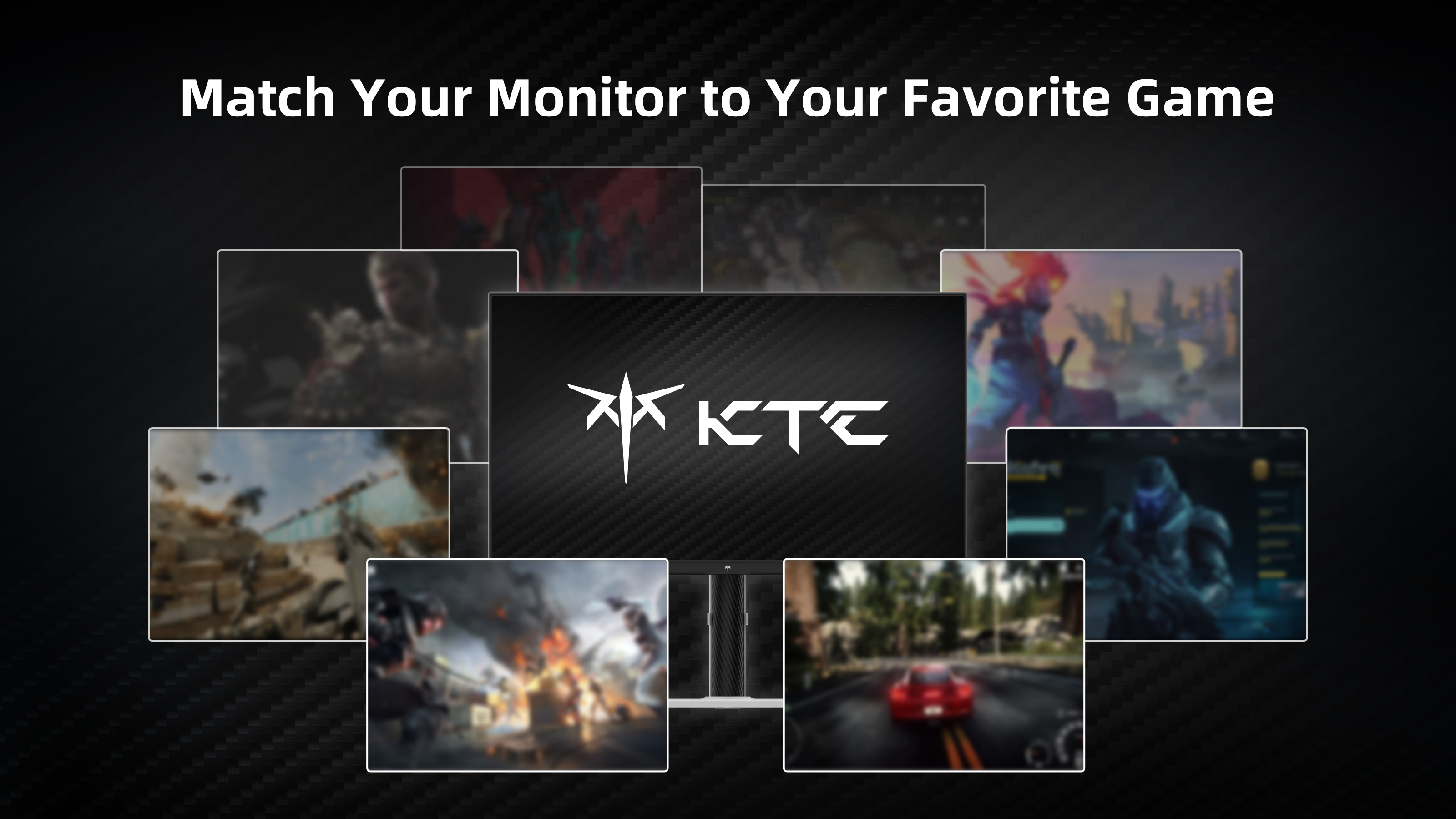In 2025, the choice for a top-tier gaming monitor really boils down to two technologies: OLED and Mini-LED. They work very differently, giving each distinct advantages.
OLED is known for its perfect blacks and extremely fast pixel response, leading to incredible contrast and motion clarity. Mini-LED counters with exceptionally high brightness and complete immunity to burn-in. This guide breaks down these differences to help you figure out which technology is the right one for you.
Mini-LED vs. OLED: The Technology Behind the Picture
The fundamental difference between OLED and Mini-LED comes down to how they create light and color. One creates its own light at the pixel level, while the other uses a highly advanced backlight.
OLED: Self-Emissive Pixel Technology
The key to OLED technology is that it's "self-emissive." Each individual pixel in the panel is its own light source, made of organic compounds that light up when electricity passes through them. This means a single pixel can be turned on to display color or switched off entirely, creating a perfect black. Because there is no separate, universal backlight, the panel has precise, pixel-by-pixel control over the image.
By 2025, two primary types of OLED panels are used in gaming monitors:
- WOLED (White OLED) + MLA: These panels use white, red, green, and blue subpixels. Many now include a Micro Lens Array (MLA), which is a layer of tiny lenses that better focuses light toward the viewer. This boosts brightness significantly without using more power.
- QD-OLED (Quantum Dot OLED): This technology uses a blue OLED layer to illuminate red and green quantum dots. This process creates pure red, green, and blue light without needing a color filter, which results in excellent color vibrancy and volume.
This self-emissive design gives OLED its core advantages: infinite contrast (because black pixels emit no light) and nearly instantaneous response times.
Mini-LED: A Revolution in Backlight Technology
Mini-LED is an advanced version of traditional LCD technology. It still uses a standard LCD panel (either IPS or VA) to create the image, but it completely overhauls the backlight system. The revolution is in that backlight. Instead of the few dozen lights used in older displays, a Mini-LED monitor uses a grid of thousands of tiny LEDs.
These thousands of LEDs are grouped into what are now thousands of individually controlled dimming zones. This allows the monitor to make some zones very bright for highlights in a scene while keeping other zones completely dim for shadows, vastly improving contrast compared to any previous LCD.
By 2025, Mini-LED technology will continue to be refined:
- More Dimming Zones: High-end models are moving from around 1,000 zones to over 4,000. This increase makes the light control more precise and further reduces "blooming" (the faint glow around bright objects on a dark background).
- Smarter Algorithms: The processors that control the backlight are getting faster and more accurate. This helps make the transitions between light and dark zones smoother and less noticeable during gameplay.
This advanced backlight system gives Mini-LED its main strengths: extremely high peak brightness and complete immunity to burn-in.
Mini-LED vs. OLED: Gaming Performance
These fundamental differences in technology directly affect how each display performs in a gaming environment. Here’s a head-to-head comparison across the six most important areas.
Motion Clarity & Response Time
When it comes to keeping the image sharp during fast motion, there’s a clear winner. An OLED pixel is basically just a tiny light that turns on and off with electricity, a process that takes about 0.03 milliseconds. It's so fast, it's practically instant. A Mini-LED screen, however, still relies on tiny physical parts called liquid crystals that have to move to block or let light through. Even on the fastest models, this takes about 1 to 3 milliseconds.
This might not sound like much, but it has a real impact. As you know from playing competitive games, having the clearest possible motion is key. OLED delivers a super sharp, blur-free picture that a Mini-LED just can't perfectly replicate. For fast-paced shooters, this is a decisive advantage.
Winner: OLED
HDR Impact & Peak Brightness
If you want a screen that gets incredibly bright, Mini-LED is the king. It can blast out over 1500 nits of brightness, making explosions and sunny landscapes in games look stunningly bright and realistic. Best of all, it can maintain this brightness across the whole screen without dimming itself down.
OLEDs have gotten much brighter, with top-tier models hitting 1000-1300 nits in bright spots, which makes for fantastic HDR. However, they have a built-in safety feature (an Automatic Brightness Limiter, or ABL) that dims the whole picture if the entire screen gets too bright. This protects the panel, but it means a Mini-LED will look consistently brighter in a scene like a snowy field.
Winner: Mini-LED (for raw brightness), OLED (for precision)
Contrast & Black Levels
This is where OLED really shines... or rather, doesn't shine, which is its strength. Since each pixel is its own light source, it can turn completely off. This means blacks are truly, perfectly black, not just a dark gray. Seeing a single bright star against a pitch-black sky gives the image an incredible sense of depth that no other tech can match.
Mini-LED gets very close. With thousands of lighting zones, its black levels are excellent. But because it still uses a backlight behind the screen, a little bit of light can sometimes leak around a bright object on a dark background. This creates a faint "halo" or "blooming" effect. While it’s much less of a problem on 2025 models, it's something you simply won't see on an OLED.
Winner: OLED
Longevity & Burn-in Risk
The "organic" materials in OLED pixels degrade over time, which is their primary vulnerability. Uneven use can lead to permanent image retention, or "burn-in," with static game elements like health bars and mini-maps posing the biggest risk.
By 2025, manufacturers will be aggressive in addressing this. Premium gaming OLEDs now include robust heat sinks, pixel-shifting features, and auto-dimming for static logos. Crucially, 3-year warranties that explicitly cover burn-in are becoming standard, offering significant peace of mind. Mini-LED, as an inorganic technology, is simply not susceptible to burn-in, making it a worry-free choice for any type of use.
Winner: Mini-LED
Color Performance
The race in color performance is very close, as both technologies offer superb wide-gamut color. Top-tier Mini-LED monitors with Quantum Dot films provide fantastic DCI-P3 coverage and professional-grade accuracy, producing rich and satisfying colors.
However, third-generation QD-OLED technology likely holds a slight edge for the most critical eye. Because it generates pure RGB light without a color filter, it has exceptional color purity. This allows it to maintain color saturation even at high brightness (a metric called color volume), giving its colors a unique vibrancy and "pop."
Winner: A Draw / Slight Edge to QD-OLED
Price & Accessibility
As a more mature technology, Mini-LED manufacturing benefits from economies of scale, allowing it to be sold at more affordable prices. OLED panel fabrication is still more complex and costly, positioning it as a premium option.
This trend continues in 2025. Mini-LED consistently offers a better performance-per-dollar value. At any given price point below the absolute high end, a Mini-LED monitor will likely offer a larger screen or more features than its OLED equivalent, making it more accessible to a wider range of gamers.
Winner: Mini-LED
Mini-LED vs. OLED: The Best Choice for Your Use Case
The best monitor for you depends entirely on what you do with your monitor. We can break this down by looking at three common types of users to see which technology is the better fit.
For the Esports Competitor (Valorant, CS: GO, Apex Legends)
If you mostly play competitive games, you need one thing above all else: speed. That means the clearest possible motion and the fastest response time. For you, the choice is OLED. Its pixels react almost instantly, which gives you a real edge by getting rid of motion blur. It makes tracking other players and aiming feel cleaner and more precise when every moment counts.
For the Cinematic & RPG Enthusiast (Cyberpunk 2077, Starfield, Alan Wake 2)
If you love getting lost in beautiful games with amazing graphics, you want an immersive picture with deep blacks and bright, popping highlights. This is a tough call. OLED creates an incredible atmosphere with its perfect black levels, making dark scenes feel more realistic. But a good Mini-LED offers super high brightness that can make a sunny landscape look stunning, and you don't have to worry about burn-in. It's a toss-up, but OLED often wins for its "wow" factor.
For the Hybrid User (Gaming, Content Creation & Productivity)
If your monitor is for more than just gaming—like for work, creative projects, or just Browse—versatility is key. You need something bright and reliable. Here, Mini-LED is the clear winner. The fact that it can't get burn-in is a huge deal when you have static things like toolbars on screen all day. Plus, its higher overall brightness makes it a more practical choice for a variety of tasks, making it the best do-it-all monitor.
Align Your Monitor with Your Priorities!
If you want the absolute best image quality for fast-paced and cinematic games, OLED's perfect contrast and blur-free motion are unbeatable. But if you're looking for a super bright, practical, and durable screen for gaming and daily work, Mini-LED is the more versatile and worry-free choice. The right monitor is simply the one that makes the most sense for you and your setup.




